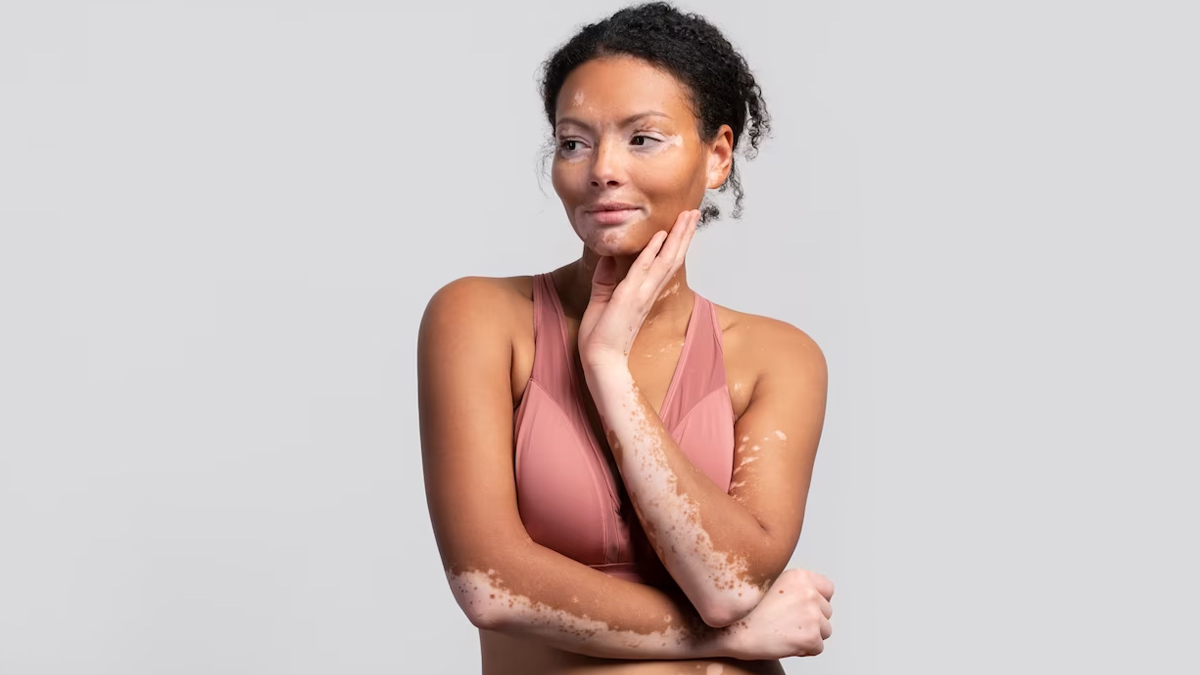
Vitiligo is a chronic skin disorder characterised by the loss of pigment-producing cells called melanocytes. This results in the appearance of white patches on the skin, which can vary in size and areas in the body, including the face, hands, feet, and even on the scalp or genitals. This condition affects millions of people worldwide, yet it remains widely misunderstood. The lack of awareness surrounding vitiligo often leads to various myths and misconceptions. This world vitiligo day, Dr. Asmita Dhekne Chebbi, MBBS, MD - Dermatology, Venereology & Leprosy, Dermatologist, Cosmetologist, Apollo Spectra Hospital, Bengaluru busts some myths and facts about vitiligo.
Table of Content:-
Myths about Vitiligo
#1 Vitiligo Is Contagious
One of the most common myths about vitiligo is that it is contagious, which is not true. Vitiligo is not caused by any contagious agents such as bacteria or viruses. It is an autoimmune disorder in which the body's immune system mistakenly targets and destroys melanocytes. Therefore, it cannot be transmitted from person to person through direct contact or any other means.
Also Read: Read Story of Shivaji Choudhary Who Made Vitiligo His Strength To Influence People

#2 It is just a cosmetic issue
Another misconception is that vitiligo is solely a cosmetic issue. While the visible white patches are the most noticeable aspect of vitiligo, it is essential to understand that this can have a significant impact on a person’s psychological well-being. People with vitiligo often experience social stigma, low self-esteem, and even depression due to the misconceptions and discrimination associated with the condition. It is crucial to approach vitiligo with empathy and support those affected by it.
Treatment Methods for Vitiligo
While there is currently no cure for vitiligo, several treatments can help manage the condition and improve the appearance of the skin.
Topical corticosteroid creams or ointments can help to re-pigmenting the affected areas by reducing inflammation. These creams are usually prescribed by dermatologists and require regular application over an extended period.

Phototherapy is another option, which involves exposing the skin to ultraviolet (UV) light. This can be done through two main methods: narrowband UVB and excimer laser. Narrowband UVB involves exposing the entire body or specific areas to UVB light, while excimer laser delivers targeted UVB light to smaller areas. Both methods aim to stimulate repigmentation in the affected areas by encouraging the production of melanocytes.
Also Read: FDA Approves New Treatment For Vitiligo
Surgical interventions may be considered in rare cases.
One such procedure is skin grafting, where healthy skin cells are transplanted from one area of the body to the depigmented areas. This method is often used for stable vitiligo, where the condition has remained unchanged for at least one year.
Another surgical option is melanocyte transplantation, where melanocytes are taken from healthy areas of the skin and transplanted into the depigmented areas.
It is important to note that not all treatment options work the same for everyone, and the effectiveness may vary from person to person. Therefore, it is crucial to consult a dermatologist who can assess the individual's specific condition and recommend the most suitable treatment plan.
Conclusion
While there is no absolute cure for vitiligo, various treatment options, such as topical corticosteroids, phototherapy, and surgical interventions, can help manage the condition and improve the appearance of the skin. It is essential to raise awareness about vitiligo, dispel the myths and misconceptions surrounding it, and promote acceptance and support for those living with the condition.
Also watch this video
How we keep this article up to date:
We work with experts and keep a close eye on the latest in health and wellness. Whenever there is a new research or helpful information, we update our articles with accurate and useful advice.
Current Version